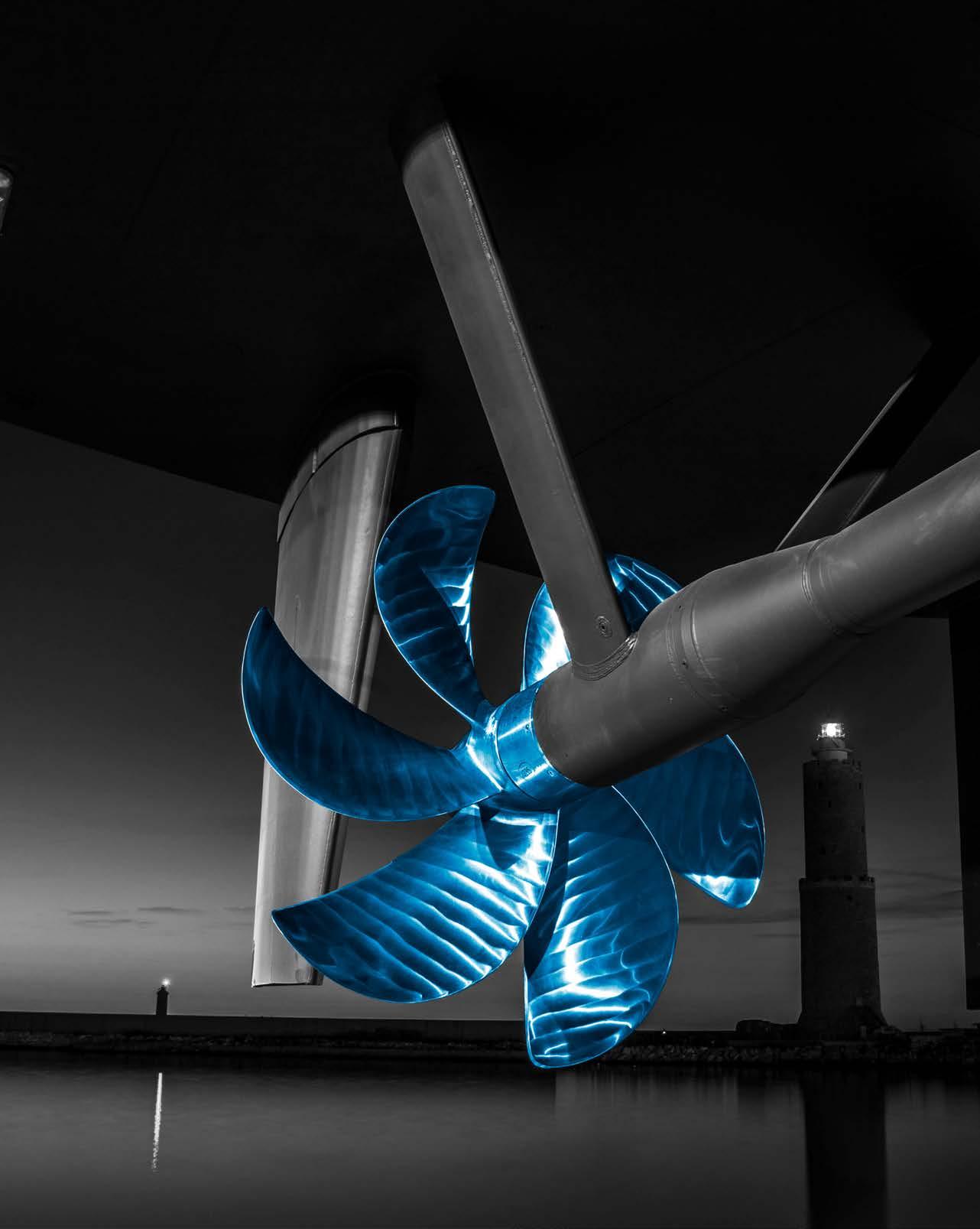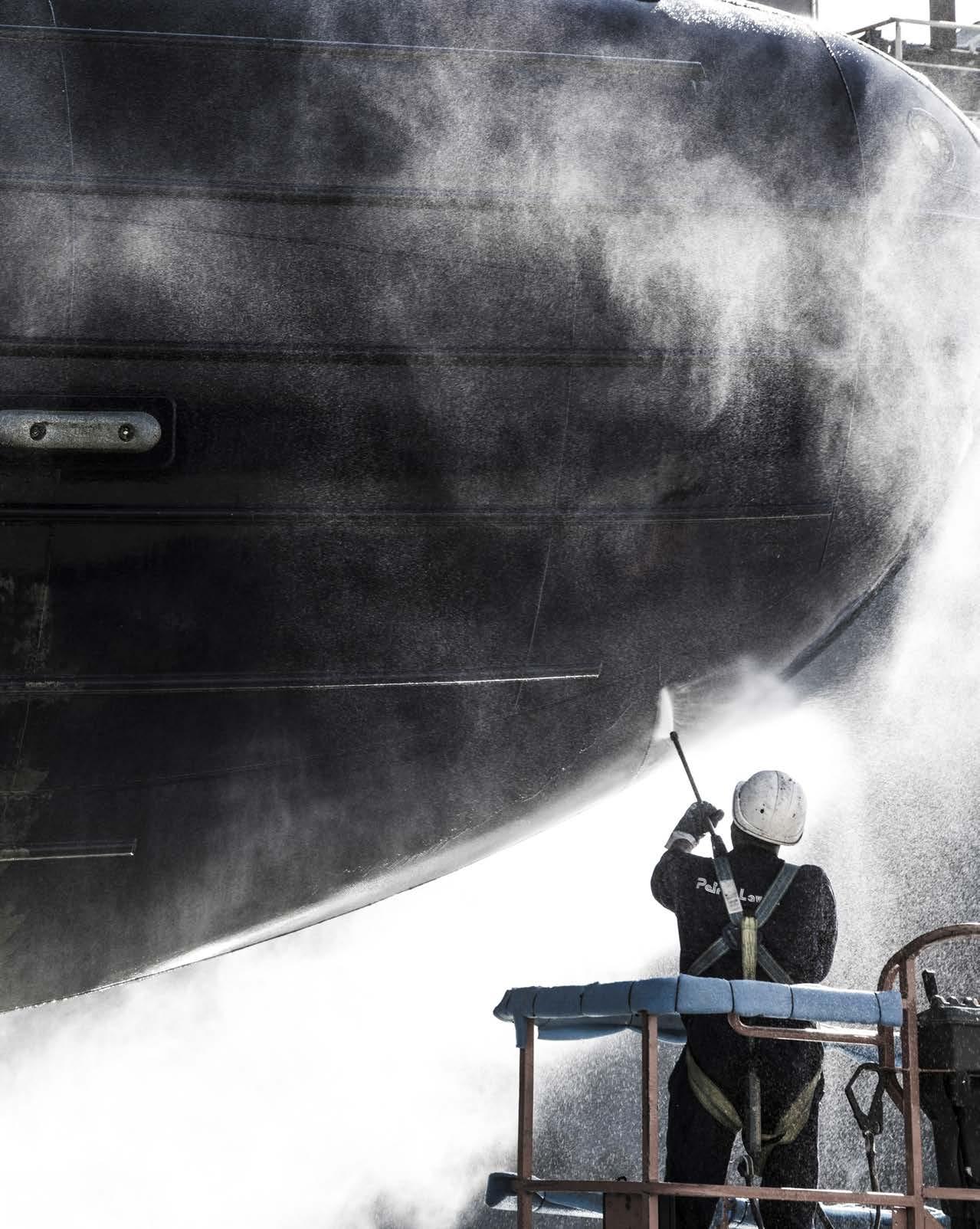
2 minute read
HIGH NOON FOR HIGH SPEEDS
The trend of advertising to promote what are, in effect, relatively hypothetical ‘top speeds’ in large yachts has thankfully tailed off somewhat in recent years. The ostentatious roosters’ tails are still prevalent along the Mediterranean coastline, but boasting about speed in the marketing of yachts, less so.
As life-cycle assessment tools such as YETI from Water Revolution Foundation gain traction, so should the honest understanding and communications around the impact of each yacht, starting with the relatively simple equation of fuel consumption.
There are some incredible projects within these pages that will hopefully break the diesel status quo, but the reality of the order book and the historical fleet’s construction dictates that the majority of yachts will still be running on fossil fuels for a generation. How fast this fleet moves directly relates to how much carbon it releases.
Exponential growth curves are funny things. As a yacht pushes more and more water ahead of itself, the energy required to push against the bow wave increases dramatically. Marginal increases in speed lead to enormous amounts of fuel being consumed. A hulking superyacht scrummaging its way through the water, burning astronomical amounts of fuel to push the boat from 15 to 16.5 knots, may have been acceptable in the past but this behaviour is very hard to justify outside the industry echo chamber.
Everyone has the right (for the time being) to own a 120-foot jet drive, but let’s leave the speed merchants to one side. The top speeds for large yachts with conventional mechanical diesel propulsion are a theoretical curiosity, not a feature. As we measure a yacht’s impacts more accurately, one of the most meaningful measures that can be made is to simply travel at the most efficient speeds.
The shipping and cruise sectors are neurotically focused on efficiency, for commercial reasons initially, but increasingly attention is turning to the carbon consequences implied by this efficiency and fuel-saving. Speed reduction is a significant factor in these sectors’ decarbonisation strategies, but is consciously absent from the strategy of the superyacht industry (insofar as we have one).
As a journalist, I’d much rather exalt the efficiency of movement as a metric for a large yacht than dwell on how much fuel is being consumed to move a 90-metre yacht at 22 knots. Google Earth and a calculator are dangerous in the wrong hands. If we continue to normalise the fact that these yachts have the capability to cruise at these speeds because it’s technically possible, anything slower feels like it’s wasting the owner’s time and the charter broker’s money – especially when they are told how long a crossing will take.
Slowly weaning ourselves off any mention of ‘top speed’ for large yachts – outside of the classroom – can allow the industry to shift its attitude to be in line with the rest of the world. We are redefining why we travel, and it’s not enough to just say ‘because I want to’ anymore.
The superyacht industry is mistaken if we think we’re immune from this shift. Burning far more fuel than is needed, to save a day on a three-week crossing or pick up the next set of guests, will not be a good enough reason either. JH

with Max Stott









